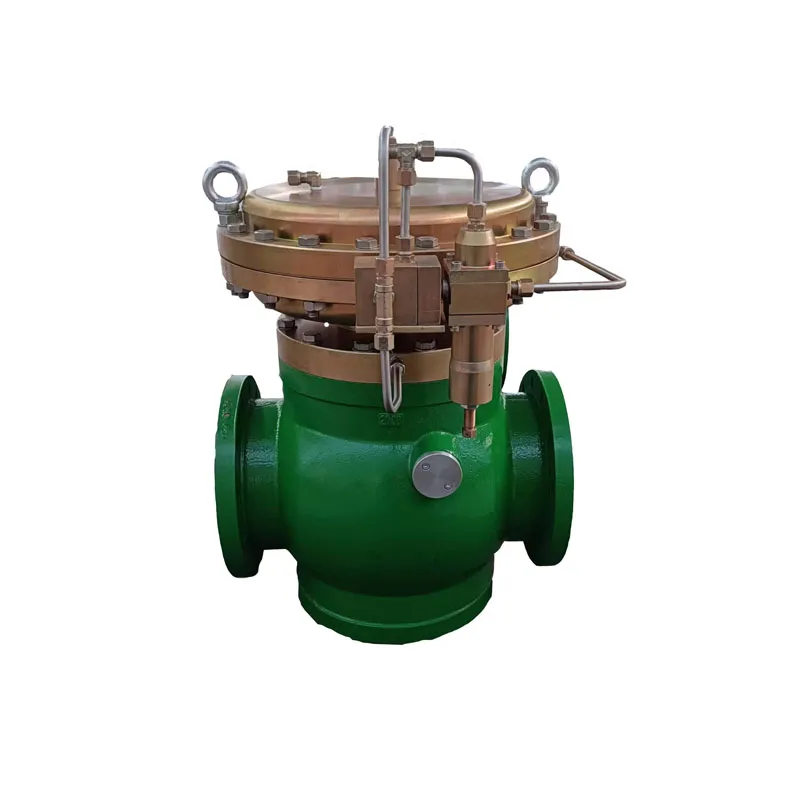
Nov . 06, 2024 11:44
Back to list
Safety Valve Mechanisms for Pressure Regulation and System Protection
Understanding the Importance of Safety Valves A Critical Component in Pressure Systems
Safety valves, commonly referred to as safety relief valves, play a vital role in various industrial applications, ensuring the safety and efficiency of pressure systems. These devices are designed to automatically release excess pressure from a system, preventing catastrophic failures that could lead to equipment damage, environmental hazards, or even loss of life. In this article, we will explore the functionality, types, and importance of safety valves in maintaining operational integrity and safety.
How Safety Valves Work
Safety valves operate on a simple principle they automatically open to relieve pressure when it reaches a predetermined level. This is achieved through various mechanisms, often involving a spring-loaded system. When the pressure in a vessel rises above the set point, the force exerted by the fluid overcomes the spring tension, causing the valve to open. Once the pressure is reduced to a safe level, the valve closes, ensuring that the system returns to a stable state.
Types of Safety Valves
There are different types of safety valves, each designed for specific applications
1. Spring-loaded Safety Valves The most common type, relying on a spring mechanism to maintain pressure levels. They are widely used in steam, gas, and liquid systems.
.
3. Blow-off Valves Used in applications like air compressors, these valves release a burst of air to quickly lower pressure.
صمام الأمان

4. Ball and Gate Valves These are less traditional safety valves but are sometimes used in low-pressure applications.
Each type has its advantages and ideal applications, influenced by factors such as the medium, pressure range, and environmental conditions.
Importance of Safety Valves
The significance of safety valves cannot be overstated. First and foremost, they are essential for preventing accidents. Pressure vessels and systems can accumulate significant amounts of pressure, and if that pressure is not correctly managed, it can lead to explosions or other serious incidents. Safety valves act as a critical line of defense against such dangers.
Additionally, safety valves contribute to the operational efficiency of systems. By maintaining safe pressure levels, they help avoid excessive wear and tear on equipment, prolonging its lifespan and reducing maintenance costs. This not only saves money but also enhances productivity.
In industries such as oil and gas, chemical processing, and pharmaceuticals, regulatory compliance is a major concern. Safety valves must meet stringent standards to ensure the safety of operations. Regular inspection and maintenance of these valves are crucial, as a malfunctioning safety valve can lead to severe consequences, including legal liabilities.
Conclusion
In conclusion, safety valves are indispensable components in various industrial applications. Their primary role in preventing overpressure situations ensures the safety of personnel, protection of valuable equipment, and compliance with regulations. As industries continue to evolve, the design and technology of safety valves will also advance, contributing to even greater safety standards. Regular maintenance and adherence to safety protocols regarding safety valves are crucial to harnessing their full potential, ultimately creating a safer working environment for all. In essence, understanding and respecting the role of safety valves is fundamental for anyone involved in the management of pressure systems.
Latest news
-
Safety Valve Spring-Loaded Design Overpressure ProtectionNewsJul.25,2025
-
Precision Voltage Regulator AC5 Accuracy Grade PerformanceNewsJul.25,2025
-
Natural Gas Pressure Regulating Skid Industrial Pipeline ApplicationsNewsJul.25,2025
-
Natural Gas Filter Stainless Steel Mesh Element DesignNewsJul.25,2025
-
Gas Pressure Regulator Valve Direct-Acting Spring-Loaded DesignNewsJul.25,2025
-
Decompression Equipment Multi-Stage Heat Exchange System DesignNewsJul.25,2025

